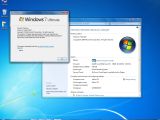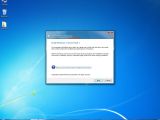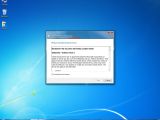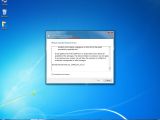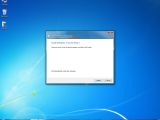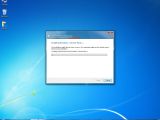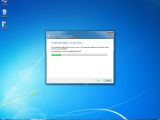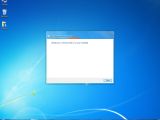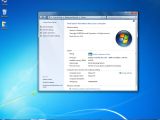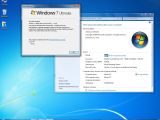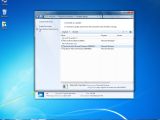Service Pack 1 is a natural step in the evolution of Windows operating systems, and SP1 for Windows 7 makes no exception to this rule. Just as it was the case with the service packs for Windows Vista and Windows Server 2008, the first SP for Windows 7 and Windows Server 2008 R2 will upgrade both platforms. However, customers must be aware of the fact that Microsoft has promised to deliver nothing more than a minor upgrade for the latest iteration of its Windows client and server operating systems. Not that Windows 7 RTM needs SP1 to be ready for adoption, with corporations such as Intel already upgrading thousands of seats to Build 7600, and breaking the mold of waiting for the first service pack before they upgrade.
Although Windows 7 SP1 had been cooking for quite some time, it was only in mid-March 2010 that Microsoft started sharing the first details related to the update. The move signaled the proximity of the service pack’s first public release, although the Redmond company did not give any indication as to when it planned to offer a Beta development milestone to users for testing. This doesn’t, of course, mean that early adopters are not already running previews of Windows 7 SP1.
In fact, one of these releases, Windows 7 SP1 Build 6.1.7601.16537 v.153, allegedly a Beta Build, has made its way into the wild and is offered for download by various illegal third-party sources. Microsoft has yet to confirm or to deny the validity of the leaked bits, which ended up on torrent trackers and warez websites, and for which I will not be providing any links.
Leaks inevitably accompany the development process of a new Windows release, especially as testing bits are served to early adopters outside of Microsoft. But then again, the company can’t rely exclusively on dogfooding for the testing of products of Windows’ size (or for service-pack releases, for that matter), and certainly not considering the impact that the OS delivers worldwide.
SP1 – minimal impact on Windows 7
But under no circumstances should customers expect more than a minor upgrade out of Windows 7 SP1. After all, the general consensus is that there’s no need to wait for SP1 in order to upgrade to Windows 7. Post Vista RTM, Microsoft has relied heavily on Windows Update for the release of individual pieces of service packs. This is also the case with Windows 7 SP1, with the service pack now limited to being a package of integrated bug fixes and individual updates. However, Windows 7 SP1 will also serve to deliver additional features, two of which have already been detailed by the software giant, namely Dynamic Memory and RemoteFX.
The leaked version of Windows 7 SP1, Build 6.1.7601.16537 v.153 (6.1.7601.16537.amd64fre.win7.100327-0053) designed to integrate with the 64-bit (x64) flavor of Windows 7 and Windows Server 20008 R2, is also accompanied by documentation that has reportedly been produced by Microsoft. I have yet to verify this aspect, so I will provide only general details, and offer additional content, when I’ll be able to confirm the legitimacy of the documents.
“The impact of SP1 on the Windows 7 client operating system is considered to be minimal,” an excerpt of the resources packaged with the leaked copy of Windows 7 SP1, Build 6.1.7601.16537 v.153, reads. “ Included changes are expected to address minor usability issues in specific scenarios, as outlined in this document. While Microsoft always recommends that users deploy the latest service pack as quickly as possible in order to maintain the best levels of support, security and user experience, we are strongly recommending to customers and partners that deployment of SP1 should not be considered a blocking issue for the adoption of Windows 7. In other words, organizations do not need to wait for SP1 to begin receiving the value of Windows 7 today as we don’t anticipate the SP1 for Windows 7 to be substantial.”
Windows Server 2008 R2 SP1
SP1 will introduce Dynamic Memory and RemoteFX, two new features designed to kick up a notch the virtualization stack for Windows 7. Dynamic Memory will enable Windows Server 2008 R2 SP1 to better administer physical memory usage for virtualization resources, while RemoteFX is set up to bring the remote user experience for virtual desktops, session-based desktops and remote applications on par with that of actual desktops.
According to the leaked documentation, additional improvements will be offered for DirectAccess, branch offices and authentication traffic on domain controllers. More specifically, as far as DirectAccess is concerned, SP1 will boost scalability and high availability. At the same time, the service pack is slated to bring to the table support for Managed Service Accounts (MSAs) in secure branch office scenarios, as well as support for increased volume of authentication traffic on domain controllers connected to high-latency networks. None of these additions to Windows Server 2008 R2 have been confirmed, with the exception of Dynamic Memory and RemoteFX.
Windows 7 SP1
From the leaked documentation, it is clear that Windows Server 2008 R2 will benefit more consistently from the delivery of SP1 than the latest iteration of the Windows client. Improvements coming to Windows 7 impact communication with third-party identity federation services, the performance of HDMI audio devices, and printing mixed-orientation XPS documents. Unlike with Windows Server 2008 R2 SP1, Microsoft has not offered any details related to Windows 7 SP1, so all the information in the leaked documents needs to be taken with a grain of salt.
This is precisely why I’m insisting on offering just a general perspective, rather than publishing all the details available. Windows 7 SP1 is after all still under development, and any of the changes in the leaked documents could not make it in the final version of the service pack, unless they’re officially announced by the Redmond company. In this context, there are also modifications that will impact both Windows 7 and Windows Server 2008 R2. Microsoft apparently worked to boost the power consumption and energy efficiency of the platforms, but also to modify the behavior of the “Restore previous folders at logon” functionality, and to improve support for additional identities in RRAS and IPsec.
The fact of the matter is that there are little visible changes in Windows 7 SP1 Build 6.1.7601.16537 v.153 (screenshots below, look for yourselves).
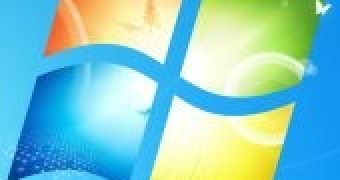
 14 DAY TRIAL //
14 DAY TRIAL // 
